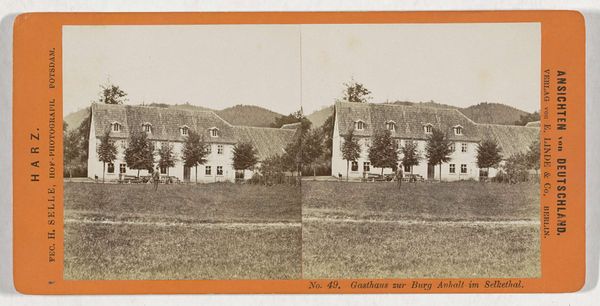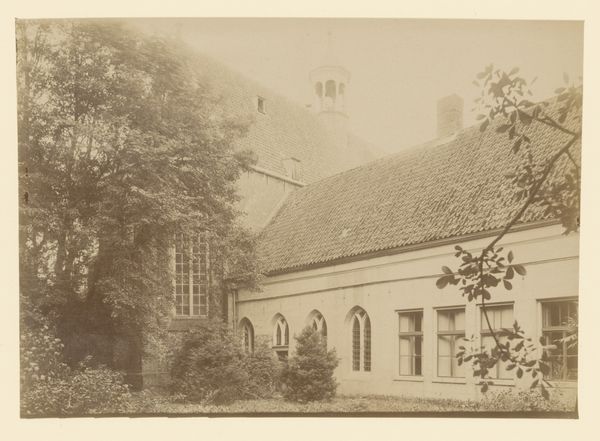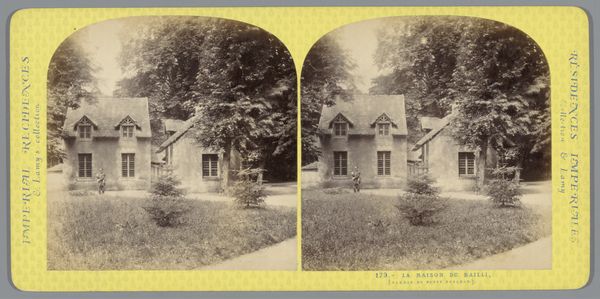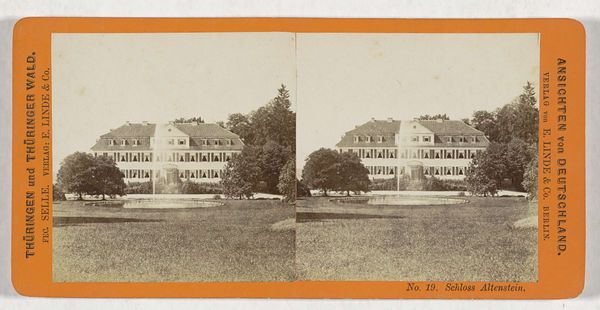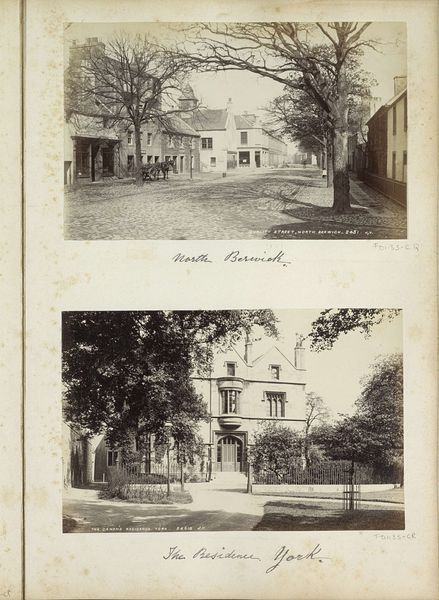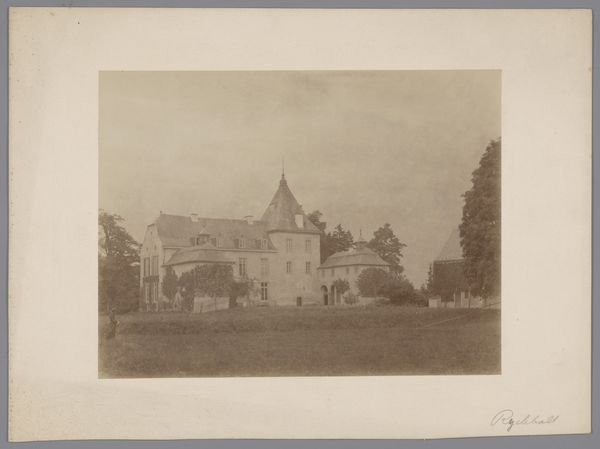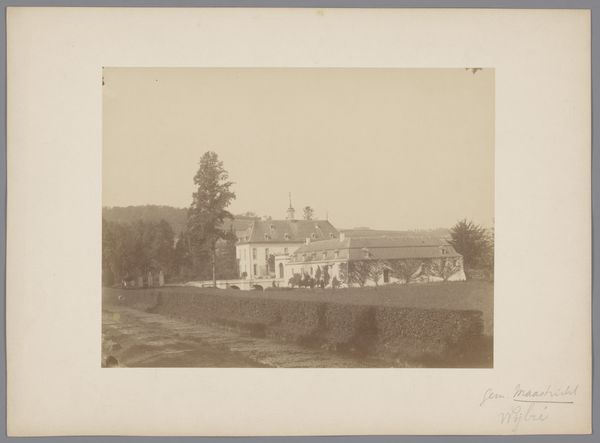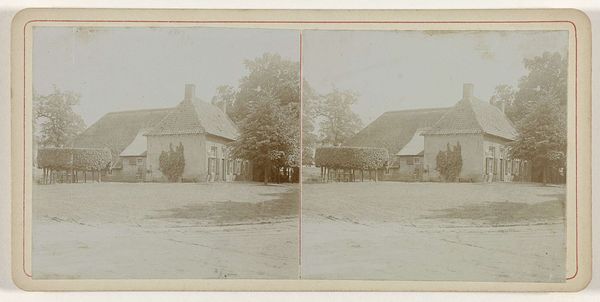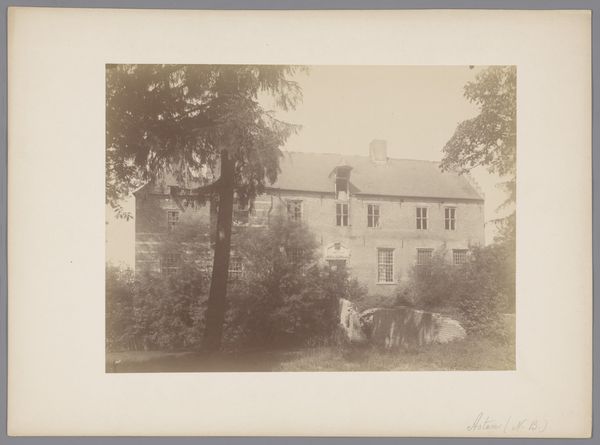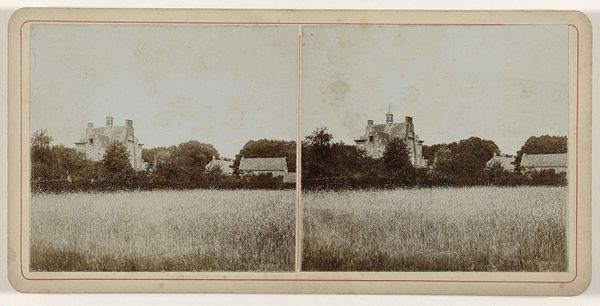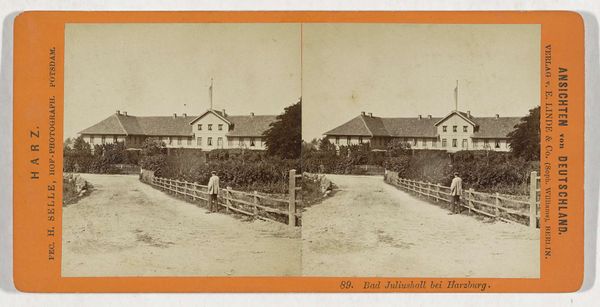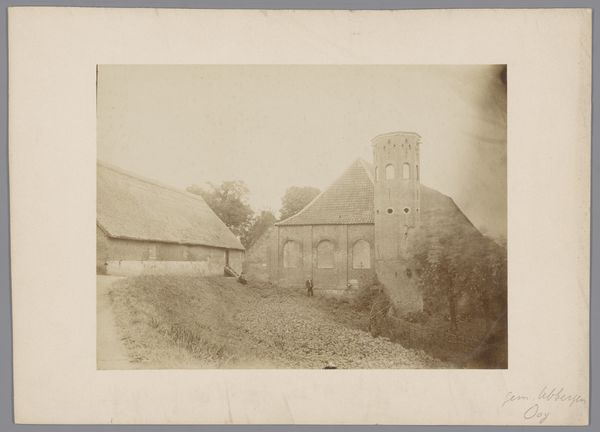
photography
#
landscape
#
photography
#
realism
Dimensions: height 87 mm, width 177 mm
Copyright: Rijks Museum: Open Domain
Curator: Before us, we have Hermann Selle's stereoscopic photograph, "Pension 'zum Falken' in het Selkedal, Falkenstein," likely taken between 1868 and 1890. The photographic print, mounted on card stock, depicts a bucolic landscape. Editor: There’s a quiet stillness to this scene, a sense of unassuming, solid peace. The composition leads my eye gently towards the half-timbered house nestled amongst the trees. It evokes a sense of retreat and calm. Curator: It’s interesting to consider the socioeconomic context. Selle, as a court photographer, likely produced this not simply as art, but for commercial distribution. These stereoscopic cards were popular souvenirs. Their existence tells a story about the rising middle class and their increased mobility and consumption of leisure. Editor: Absolutely, it speaks to the romanticizing of the rural as a refuge. But it’s important to question what this “refuge” signifies. Whose labor maintains this picturesque ideal? Where are the marginalized voices of the region in this narrative? We are only provided an objective point of view, lacking narrative substance. Curator: Good points. The materials themselves tell a story of technological advancements. The photograph, and the chemicals and processes used, represent a very specific intersection of science, industry, and artistry that made these views available for a price to a certain demographic. Editor: And what does it mean to "own" a view like this? To possess an image of a place? In a way, that photograph represents a claim of control, doesn’t it? A taming of the landscape through representation and consumption. And by looking closer we could also observe other political issues within the location depicted. Curator: That’s a complex consideration. I am struck, ultimately, by the subtle texture, by the play of light and shadow meticulously captured using albumen silver. A material expression of photographic science in its prime. Editor: It truly is a layered artifact. Thinking critically about photography then means unpacking these assumptions, revealing how images construct and perpetuate ideology. It reminds us to stay skeptical. Curator: Yes, the act of its production and distribution shaped perceptions of leisure, technology and travel in a significant way. I'd be remiss if I didn't consider the process as primary to understanding this photgraphy and images that are produced in our contemporary culture as well.
Comments
No comments
Be the first to comment and join the conversation on the ultimate creative platform.
